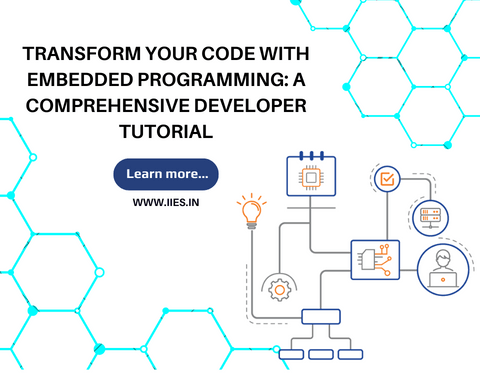
In today’s rapidly evolving technological landscape, embedded programming has become more important than ever. From controlling industrial robots to powering self-driving cars, embedded systems are at the heart of countless industries. In this comprehensive developer tutorial, we will guide you through the process of creating your own embedded applications, from learning the basics to tackling real-world challenges.
Embedded systems are specialized computer systems that are built to handle specific tasks. They are found in a wide range of industries, from aerospace to healthcare. In this section, we will define embedded systems and explore their significance across various industries. We will delve into the key components and characteristics of embedded systems and highlight common challenges that developers may encounter when working with embedded systems.
To excel in embedded system programming, acquiring the right skills and knowledge is essential. In this section, we will provide tips and resources for learning embedded system programming. We will recommend online courses, books, and practical exercises to help you deepen your understanding. Additionally, we will discuss the importance of programming languages commonly used in embedded systems, such as C and C++. We will also suggest ways to gain hands-on experience, whether it’s through working on small projects or collaborating with experienced developers.
To further illustrate the importance of embedded programming, we will explore real-world examples of embedded systems. We will delve into industrial robots, self-driving cars, drones, video consoles, medical equipment, satellites, and robots and explain how embedded programming is crucial for their functionality and operation. Each example will showcase the unique challenges and advancements related to that particular application, providing you with insights into the diverse applications of embedded systems.
Now, let’s dive into the practical aspect of creating your own embedded applications. In this section, we will break down the process into five easy-to-follow steps.
Choosing the right programming language is a fundamental step in your embedded programming journey. We will discuss various programming languages commonly used in embedded systems, highlighting their strengths and applications. Whether you choose C, C++, or another language, we will provide recommendations and resources to help you master it.
Selecting the right embedded computer is key to the success of your application. We will walk you through the factors to consider, including processing power, memory, and connectivity options. Additionally, we will recommend reliable and widely-used embedded computers to kickstart your project.
In this step, we will guide you through the process of setting up your chosen embedded device. We will cover hardware connections and configurations, ensuring that you have a solid foundation for your application.
To streamline your development process, utilizing the right integrated development environment (IDE) and tools is crucial. We will explain essential IDEs and tools used in embedded programming, providing step-by-step instructions on installing and configuring the recommended ones. These tools will enhance your productivity and enable efficient development.
Testing and debugging are integral to the success of any embedded project. In this step, we will discuss the importance of testing and provide guidance on carrying out effective testing strategies. By ensuring the reliability and functionality of your application, you can confidently deploy it to the embedded system.
Embedded programming is a skill set that is in high demand across industries. In this comprehensive developer tutorial, we have explored the basics of embedded systems, provided resources for learning embedded system programming, highlighted real-world examples, and guided you through creating your own embedded application. We encourage you to take action and apply the knowledge gained from this tutorial. By mastering embedded programming, you can transform your code and make a significant impact in today’s technological landscape. Embrace the challenges, stay motivated, and let your creativity shine as you venture into the world of embedded programming.
Indian Institute of Embedded Systems – IIES